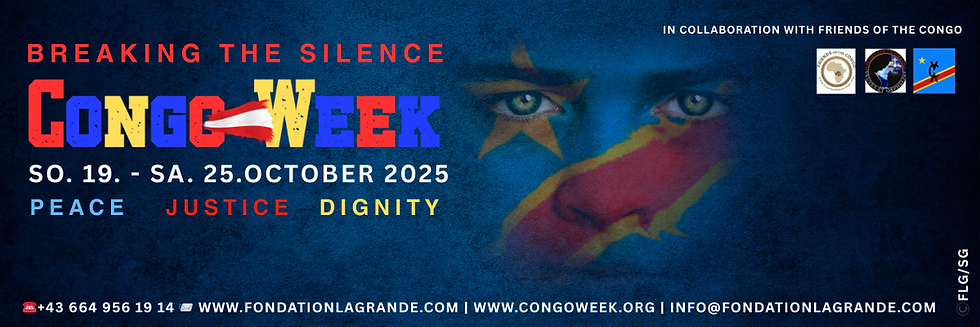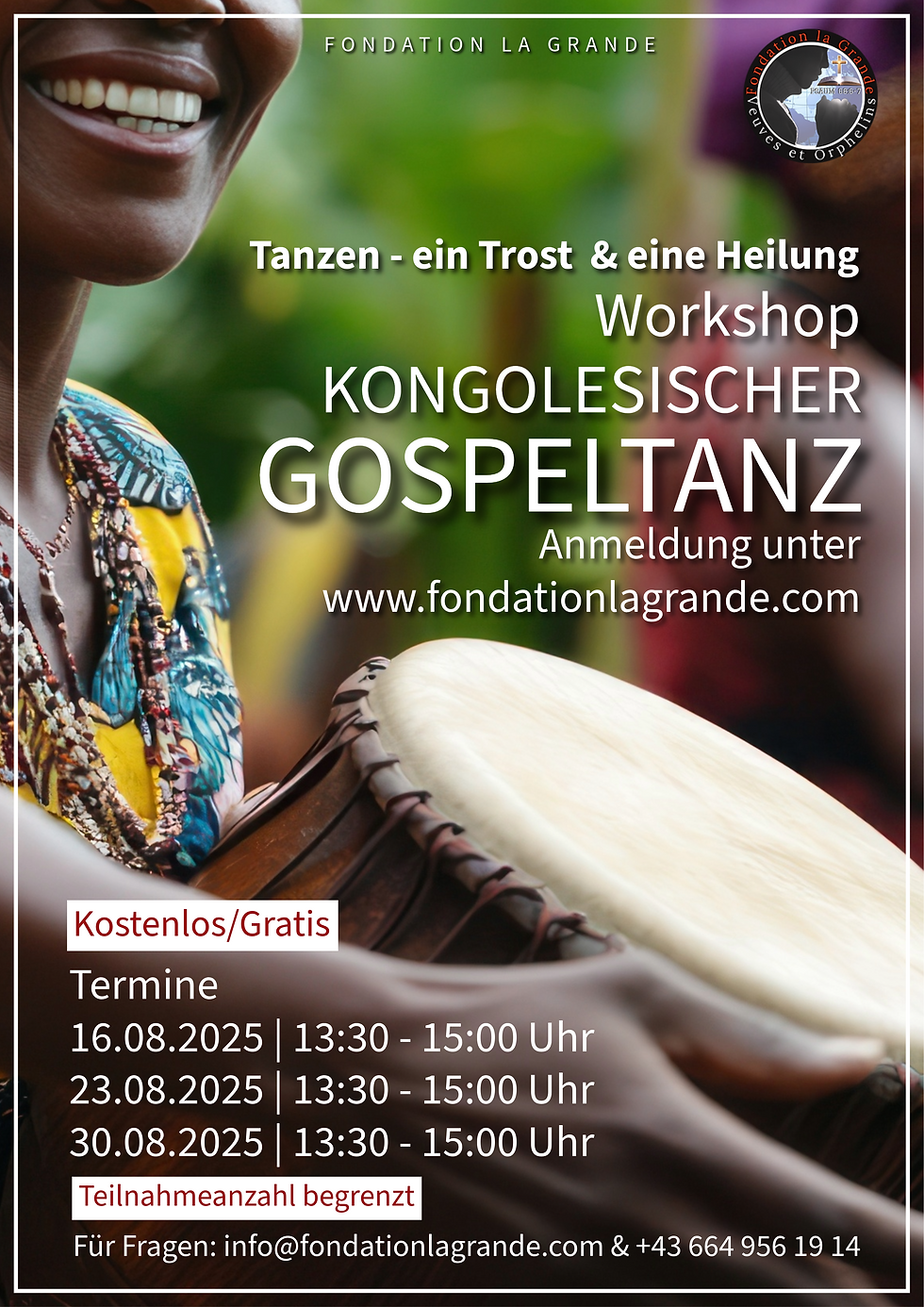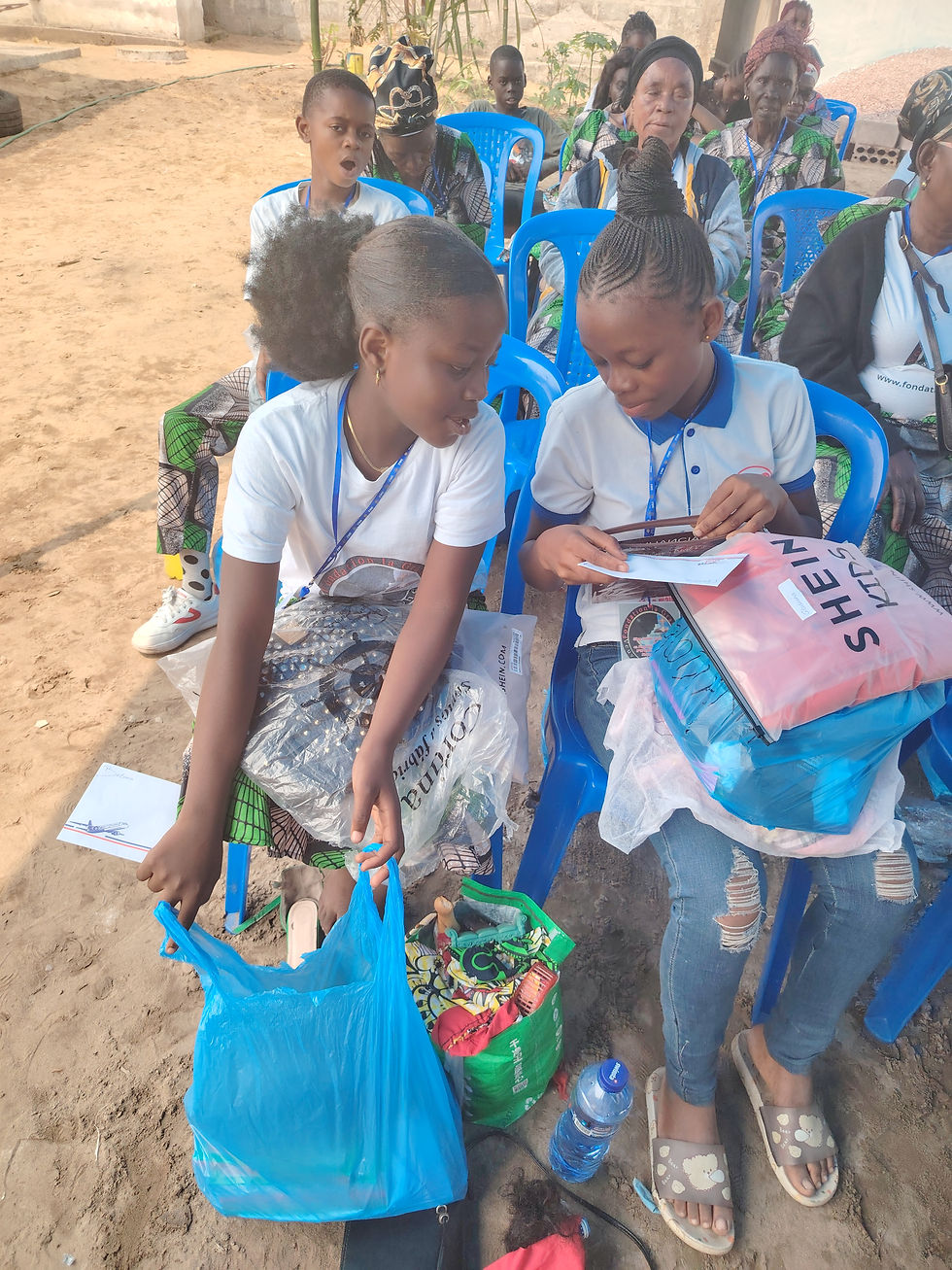Review - Cooking workshop on solidarity: Congolese cuisine
- Salomé Grünberger

- Apr 28
- 2 min read
Vienna

On April 26, 2025, FLG organized a Congolese cooking workshop for approximately 20 participants as part of the Vienna Students' Union's "Black History is every month" project . The day began with a pick-up of the guests at the train station in Vienna's 21st district, followed by a brief introduction to Congolese culture.
In the early afternoon, the culinary journey of discovery began in the kitchen, where our talented head chef warmly welcomed the participants. After a friendly welcome and introduction by the head chef, we immersed ourselves in the fascinating world of Congolese cuisine. The participants learned about typical ingredients and their optimal preparation.

The focus was on the preparation of the traditional bean stew, often served with rice, cassava, or fufu. Participants gained insights into the essential staples of Congolese cuisine: fufu and rice. They also sampled mikate, the popular fried dough balls.
The meals we prepared together were enjoyed, and the participants shared their experiences and impressions. We summarized the key points and offered space for questions and feedback to optimize the course for future participants.
The workshop not only offered culinary insights, but also promoted cultural exchange and a sense of community among the participants.

Challenges and diversity of nutrition in the Democratic Republic of Congo
The diet in the Democratic Republic of Congo reflects the country's cultural diversity and natural resources. Nutrition often presents a challenge for poor widows and orphans. Below is some information about typical foods in these communities:
staple food
manioc
Cassava is a staple of the Congolese diet. The root is often processed into fufu, a type of porridge that serves as a side dish to many dishes. In rural areas, cassava is an essential source of energy.
rice
Rice complements many meals and is particularly popular because it is filling and can be bought in larger quantities.
Typical dishes
Madesu (bean stew)
Bean dishes like madesu are rich in protein and often served with rice or cassava, providing a cost-effective way to meet daily nutritional needs.
Pondu (leafy vegetables)
Pondu, made from cassava leaves, is a traditional dish eaten regularly. It is rich in vitamins and minerals and is often complemented with fish or meat.
Challenges and creative solutions
Food shortages
Food shortages are a constant problem in many low-income households. People's creativity and adaptability often lead them to find innovative ways to make a lot out of little, for example, by collecting
wild plants.
Community support
Community gardens and local markets play a key role in food security. They provide access to fresh ingredients at affordable prices and promote food sharing.
Nutrition initiatives

Organizations and projects like the workshop supported by FLG and the Vienna Student Union (ÖH Wien) provide education and support, raising awareness about the needs of vulnerable populations in the Democratic Republic of Congo. Such initiatives are crucial for bringing about long-term positive change and improving living conditions.
We would like to thank the initiators and participants for the wonderful afternoon and the generous donations.
Digital handout:




Comments